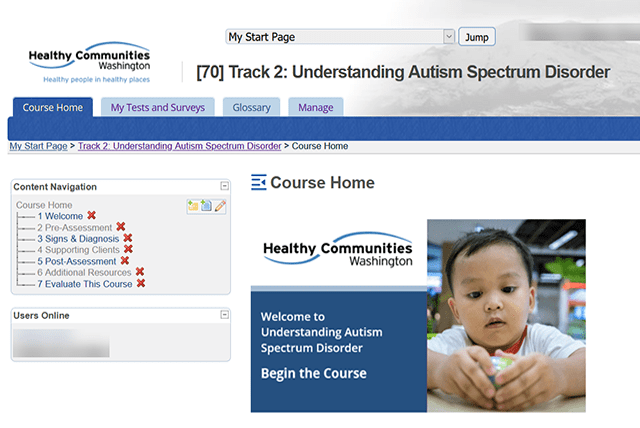Sometimes, it’s crystal clear who your training audience is:
- People who are brand new to a job. For example, someone in an entry-level position.
- People who have skills gaps. Think of a newly promoted supervisor who lacks conflict management training.
- Anyone who needs to complete compliance training, such as sexual harassment or HIPAA standards.
But sometimes, it’s not completely clear who should be a learner in a training program you know your organization needs. For example, some people come to the same position as someone else with a dozen years of experience. They don’t need the same level of training.
Creating a successful training program starts with understanding the needs of your target audience. To do this, you must identify who the intended participants are and consider how they can benefit from the program.
Get started with these seven strategies to evaluate training needs and ensure that you’re creating an effective program for your audience.
Conduct An Analysis of Your Organization’s Needs
It’s important to analyze the needs of your organization before you create any training programs. By looking at the objectives, key goals, and values of your organization, you can get a better idea of how a training program could benefit everyone.
Ask yourself what skills and knowledge need to be taught that can help improve the organization’s operations. List out these objectives and determine if a training program is necessary to meet them.
A standardized process for this is called a “training needs analysis” or “assessment.” A training needs analysis is a tool that helps trainers plan for effective training programs. It includes information about the audience, content, delivery methods, and other factors that will affect how well the training works.
Here are 20 Questions To Ask When Conducting a Training Needs Analysis, but here are a few questions you can ask potential learners or stakeholders to get you started:
- On a scale of one to 10, how do you feel about your skill level related to your job?
- What hiring needs will our program have in the next month/quarter/year?
- How many staff members have the skills necessary for this program to succeed?
Identify Staff Talents and Areas That Need Improvement
Knowing what your employees are already competent in and the skills they need to develop is a vital part of determining any training needs. By assessing where the gaps are, you can create tailored training that helps your organization reach its objectives.
A skills gap analysis is an important process to make sure your team has the right skills to do their job. In such an analysis, you can ask them to assess their own level of skills and also ask supervisors to do the same. You can often compare this to industry benchmarks or core competencies to come up with some standards.
Analyzing employee performance reviews, surveys, and more can give insight into the understanding of each individual’s strengths and weaknesses in their role. With this data, you can build a program that meets those specific training needs.
Assess The Experience Level of Your Training Audience
When you’re evaluating your training audience’s needs, understanding their experience levels is essential. Consider their current job and skills to fulfill it and how that job may evolve in the future.
You want to find out:
- What do staff already know?
- How knowledgeable would they be about upcoming changes and updates?
- How are they currently performing their jobs, and where can they improve?
You can use several different strategies to get a good idea of their experience.
Review performance metrics: Review performance metrics that relate to the job. Find out what’s measurable in the group you’re thinking of, and drill down on that. This might be evaluating the satisfaction of patients or clients who work with providers. Or it could be the speed and accuracy at which someone can use a health information system.
This practice provides valuable understanding of the potential learner’s experience level so you can more accurately point to gaps in their capabilities or skills.
Look at how they perform on the job: Observe the on-the-job performance of participants to gain an understanding of their experience level. This can provide insight into their current skill level and help to identify areas where additional training is needed.
Conduct interviews: Conduct one-on-one interviews with participants to gain a better understanding of their experience level and knowledge or skill gaps. This can provide valuable insight into their learning needs and help to tailor the training program to their needs.
Once you have established the experience level of the participants and the skills required, this will help you determine where training is most needed.
Consider the Desired Outcome of the Training Program
As you evaluate the audience needs, it’s important to consider what success looks like for your training. After all, your training program should be designed to facilitate learning and growth for each participant.
Think about how their behavior or knowledge could change as a result of the training; is it understanding a new system or mastering a specific skill? With this information in hand, you can easily determine what topics need to be covered and ensure that every participant leaves with real progress.
Explore Available Online Resources
Gathering audience data is key to determining their needs. To help you out, it’s worth exploring the variety of available online resources for researching and evaluating your potential training participants.
Such tools can provide a wealth of information about user behavior, competitor analysis, segmentation and more. This makes it easier to understand what topics will benefit learners the most. With answers to these questions in hand, you can create an effective program targeting the knowledge gaps of each participant.
Here are some resources that you might find useful:
Virtual Training: Top 10 Questions From Program Managers and Directors
Launch A Successful Pilot Program for Your Online Training
10 Training Metrics to Measure Online Training Success
These steps will help you identify your training audience and design a program tailored to their needs and preferences.
Overall, by taking a targeted and personalized approach to training program design, trainers can create highly effective programs that are well-received by their intended audience. Through careful planning, research, and design, trainers can ensure that their programs deliver maximum impact and value, while meeting the specific needs and preferences of their learners.



